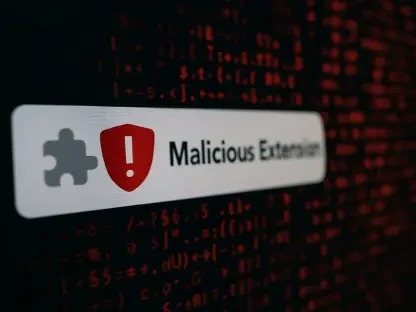As the world geared up for the grand spectacle of the Paris Olympics, another unseen battle was unfolding behind the scenes—a battle against cyberattacks. The games, spanning from July 26 to August 11, placed the French government and its cybersecurity agency, Anssi, on high alert. Their mission was clear: protect the infrastructure from digital disruptions. Here’s an in-depth look at how they succeeded.
Heightened Vigilance and Anticipation
The Paris Olympics were not the first to face cyber threats. Previous games, like the Tokyo Olympics, faced a barrage of cyberattacks, prompting French cybersecurity agencies to brace for an even larger wave. Marie-Rose Bruno, director of technology and information systems for the Paris Games, anticipated an intensity of cyberattacks that would be “eight to ten times more” than previous events. This level of foresight led to an elevated state of alertness and rigorous preparation on the part of the French authorities.
As the lead agency in this effort, Anssi deployed a wide range of proactive measures to safeguard against potential cyber threats. From the very outset of the games, a multitude of systems were meticulously monitored around the clock. The objectives were clear: identify anomalies early, respond swiftly, and ultimately secure critical infrastructure. Continuous surveillance and the use of advanced technologies enabled the agency to maintain a vigilant watch over all digital activities. The heightened vigilance went beyond mere monitoring; it included stress tests, mock emergency drills, and coordination with international cybersecurity bodies to ensure no stone was left unturned in their preparedness strategy.
Nature and Scope of Cyberattacks
Throughout the event, Anssi documented a total of 140 cyber incidents, offering a grim reminder of the persistently hostile cyber environment. These incidents were categorized into 119 “low-impact security events” and 22 more significant occurrences. The attackers aimed their digital weaponry at government entities and essential infrastructures, focusing on sectors such as sports, transport, and telecommunications. This broad scope of targets underscored the multifaceted nature of the threats faced during the Paris Olympics.
Among these varied cyber assaults, ransomware and denial-of-service (DoS) attacks emerged as the predominant forms of attack. Ransomware exploits security vulnerabilities to encrypt and block system access until a ransom is paid. These attacks often cripple entire networks and demand exorbitant payments in exchange for restoring access. Meanwhile, DoS attacks aim to inundate servers with an overwhelming amount of traffic, causing significant downtimes and service disruptions. Despite these concerted efforts by cybercriminals, none of the attacks managed to breach security measures to the extent that they disrupted critical Olympic operations, such as ticketing or transport services.
Ransomware: A Looming Threat Contained
Ransomware attacks posed a particularly serious threat during the Paris Olympics. These insidious attacks involve malicious software that encrypts a target system’s data, rendering it completely inaccessible until a ransom is paid. One notable ransomware attack targeted the Grand Palais, an iconic location in Paris, but thanks to the swift response and robust defenses already in place, the attack was contained before it could cause significant damage. This incident highlighted both the potential vulnerabilities in public infrastructure and the effectiveness of preemptive cybersecurity measures.
The success in containing ransomware attacks can be largely attributed to the comprehensive defenses that had been put in place well in advance. Regular software updates and stringent monitoring protocols played a crucial role in identifying and neutralizing threats before they could escalate into full-blown crises. Additionally, comprehensive backup strategies ensured that data could be quickly restored without acceding to ransom demands, thereby nullifying the primary leverage of the attackers. This multi-layered approach to defense was instrumental in mitigating the potential impact of ransomware attacks during the games.
Denial-of-Service Attacks: Mitigation Strategies
Denial-of-Service attacks were another formidable challenge faced during the Paris Olympics. These malicious attacks aimed to overwhelm the servers of critical infrastructures, causing outages and potentially catastrophic disruptions. Essential services like transport systems and telecommunications networks were among the prime targets, with attackers seeking to create chaos and undermine public confidence in the event’s security measures.
To combat these relentless DoS attacks, Anssi implemented sophisticated mitigation strategies designed to absorb and deflect the onslaught of traffic. Redundant systems and load-balancing techniques were integral in managing traffic surges, ensuring that no single server was overwhelmed by the volume of incoming requests. Additionally, real-time monitoring allowed for immediate detection and response to any abnormalities, preventing prolonged downtimes and maintaining the seamless operation of essential services. By leveraging these advanced strategies, Anssi was able to maintain the operational integrity of the Olympic infrastructure, ensuring that the games proceeded without a hitch.
Collaborative Efforts and Real-Time Responses
Effective defense against cyber threats required unprecedented collaboration across multiple fronts. The French government, Anssi, and private cybersecurity firms worked in tandem, sharing intelligence and resources to mount a cohesive defense. This cooperative approach facilitated rapid response to emerging threats and significantly bolstered the overall defensive capabilities. The synergy between these various entities was crucial in maintaining a robust and responsive cybersecurity posture throughout the course of the Olympics.
Real-time responses were critical in maintaining the security of the Olympic infrastructure. Anssi’s dedicated teams were on constant standby, ready to address any indicators of compromise at a moment’s notice. This agility and preparedness were key to neutralizing threats swiftly and effectively, ensuring the games proceeded without any significant digital interruptions. The cooperative and responsive strategies employed during the Paris Olympics offer valuable lessons for future events in how to effectively manage and neutralize cyber threats in real-time.
Lessons and Insights for Future Events
As the world geared up for the grand spectacle of the Paris Olympics, held from July 26 to August 11, an unseen battle raged behind the scenes: a fight against cyberattacks. The French government and its cybersecurity agency, Anssi, were on high alert, tasked with protecting the games’ infrastructure from digital disruptions. This was no small feat. The Olympics, with their global visibility and complex logistics, present an attractive target for cybercriminals. Attendees, athletes, and millions of viewers worldwide depend on seamless operations, making it crucial to safeguard information and communication systems. Anssi, equipped with advanced technology and expertise, closely monitored potential threats, collaborated with international cybersecurity agencies, and implemented robust defense mechanisms. Their mission was clear: avert any cyber threats that could potentially disrupt the games. The result was a testament to their preparedness and resilience, ensuring the Olympics proceeded without a hitch, highlighting the critical role of cybersecurity in modern events.








